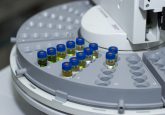Quantitative HRMS Press Release – Exploring HRMS: the future is bright

Bioanalysis Zone explores the many virtues of quantitative HRMS and its potential impact on the field in a 3-month Spotlight focus.
Recent significant improvements in high resolution mass spectrometry (HRMS)technology have challenged traditional methods of quantitative and qualitative workflows. In the latest Spotlight event hosted by Bioanalysis Zone, we explored how recent developments in this cutting-edge technology have been received by the bioanalytical community, and look to the future applications of HRMS in the field.
In a series of engaging webinars and feature articles from Bioanalysis, we looked at the broad range of applications of the technique, its associated benefits and challenges, and future developments of HRMS.
Why has HRMS technology increasingly gained attention from many within the bioanalytical community? What are the key benefits offered by this instrument? What key challenges need to be addressed for the successful application of HRMS? This Spotlight engaged key experts within the field to offer opinion and discourse on these questions.
The Spotlight series began with a survey from which we aimed to gain insight on the use of HRMS within the bioanalytical industry. The survey produced some very exciting insights into what the bioanalytical community thinks of HRMS; opinions that were further discussed by our panel of leading experts in a live panel discussion event.
One of the recurring messages throughout this Spotlight focus was that the virtues of HRMS were indisputable. Our results reflected what the bioanalytical community have previously voiced: HRMS has many virtues and has the potential to impact on a very large proportion of chemical space.
The ability of HRMS to simultaneously collect both quantitative and qualitative data for targeted and non-targeted analysis is one of the foremost reasons that attract many to the technology. Other equally important factors include HRMS’ multiplexing capabilities, adaptability, and its ability to obtain rich data sets.
Another exciting feature of this technology is its broad range of applications. HRMS’ multiplexing capabilities is needed in both small and large molecules. The technology has been around for a long time and while all the scientific groundwork has already been laid out, according to Russell Mortishire-Smith (Waters Corporation), one of the experts who participated in the panel discussion: “…the real revolution in HRMS has come in the last 10 years. Over the next 5–10 years many of the applications of HRMS will be formally validated and put into everyday use.”
It is clear these are exciting times for the application of HRMS, and the future is thus very bright and promising for the technique. It could have implications in the clinical context, in fields such as personalized medicine, where it will allow enhanced studies in proteomics and metabolomics, in addition to reducing our reliance on LC for separation, especially when LC is hard to maintain in the laboratory.
If the bioanalytical community is unequivocal in the benefits of HRMS – data from our survey did point out what may have seen as reluctance by some in switching to using HRMS. Explaining what this result implied Diego Cortes (R&D Manager, PPD® Laboratories) responded: “More than reluctance there are regulatory concerns from labs and pharma companies to adopt HRMS for quantitation in biomed. Dialogues between regulated bioanalytical community and regulatory agencies need to take place to address potential regulatory concerns the bioanalytical community have.”
Thus the reluctance is not based on the inadequacy of the technology but rather on the question raised: Can simultaneous quantitative and qualitative analysis fit in regulated bioanalysis?
In addition to the panel discussion event, we also held three mini webinars as part of this Spotlight. In these webinars by leading experts, Diego Cortes (PPD® Laboratories), Michal Kliman (Mass Spec) and Yves le Blanc (SCIEX) presented some of the advantages of HRMS based on their experiences.
Learn more about HRMS and how it is changing bioanalytical labs in this Spotlight focus on Quantitative HRMS on Bioanalysis Zone. Feature content includes top articles from the recent Bioanalysis special focus issue on HRMS in drugs metabolism pharmacokinetics, resources including application notes and commentaries from key opinion leaders within the field.
To view all the content and resources for this Spotlight focus on Quantitative HRMS visit: http://www.bioanalysis-zone.com/category/spotlights/spotlhrms/
About Bioanalysis Zone
Since launching in 2011, Bioanalysis Zone has attracted over 7,500 active members from the global bioanalytical community, representing the pharmaceutical, biotech and CRO industries, along with academia and healthcare. Each month, thousands of members visit the site to read industry news, original research exclusive interviews and commentaries. Membership is completely free of charge. Sign up online at: http://www.bioanalysis-zone.com/register.
About Future Science Group
Founded in 2001, Future Science Group (FSG) is a progressive publisher focused on breakthrough medical, biotechnological and scientific research. FSG’s portfolio includes two imprints, Future Science and Future Medicine. In addition to this core publishing business, FSG develops specialist eCommunities. Key titles and sites include Bioanalysis Zone, Epigenomics,Nanomedicine and the award-winning Regenerative Medicine. www.futuresciencegroup.com.
The aim of FSG is to service the advancement of clinical practice and drug research by enhancing the efficiency of communications among clinicians, researchers and decision-makers, and by providing innovative solutions to their information needs. This is achieved through a customer-centric approach, use of new technologies, products that deliver value-for-money and uncompromisingly high standards. www.future-science-group.com.
Our expert opinion collection provides you with in-depth articles written by authors from across the field of bioanalysis. Our expert opinions are perfect for those wanting a comprehensive, written review of a topic or looking for perspective pieces from our regular contributors.
See an article that catches your eye? Read any of our Expert Opinions for free.




